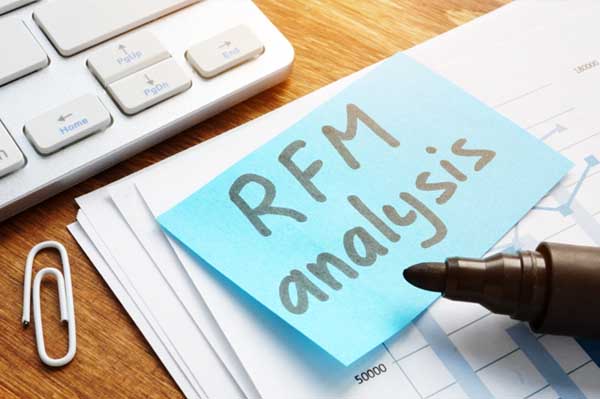
RFM matrix: why use it for your e-commerce strategy?
From more traditional campaigns to inbound marketing activities: all too often, within companies the focus of marketers and strategists is on acquiring new customers rather than retaining existing ones, in fact a real asset for the company itself.
For the same product, a purchase made by an existing customer costs the company on average 5 times less than a purchase made by a new customer, a fact that should stimulate us to reflect and understand the importance of knowing and making the most of so-called return customers.
In today’s article, we discover how we can best identify and get to know our best customers, thanks to the RFM matrix analysis model, which is particularly used in marketing automation for the implementation of retention marketing and customer loyalty strategies.
RFM matrix: what it is and why it may prove important for strategy
As anticipated, the RFM marketing matrix is an analysis model for identifying the company’s potentially best customers through the combination of three different variables.
- Recency: indicates the elapsed time since the last purchase;
- Frequency: indicates the number of times the user has made a purchase in a given time period (usually, 1 year);
- Monetary: the customer’s total expenditure in the reporting period.
This model is based on Pareto theory, according to which 80 percent of turnover is generated by 20 percent of customers, and starts from the consideration of three basic assumptions:
- customers who have purchased more recently tend to be more likely to buy than those who have not purchased for some time;
- customers who buy more often are more likely to be interested in buying again than those who have bought only once;
- customers who spend more show more intent to buy again.
Already from this first introduction to the RFM model, it is possible to understand the potential of such analysis as a tool for creating e commerce segment: users with higher R F M scores will be our best customers, the ones on whom it is worth investing time and energy. But let’s delve even deeper into this topic.
RFM matrix: how to build and implement it
Implementing an RFM analysis models manually, is quite complex, especially when maintaining and updating data.
This is why more and more marketing automation platforms, such as Blendee, are offering this functionality integrated into Analytics and as an audience segmentation tool.
But let’s start with the three basic variables: by analyzing our customers’ data we should, not only determine their values related to the three basic variables, but create a scoring system to score them.
The latter can be empirical and subjective in nature, i.e., defining the values of the various thresholds at will (perhaps more recommended for small businesses) or in statistical mode by weighting estimation or calculating percentiles.
Let’s start with an example: the values given are for illustrative purposes only, as scores and threshold values should be evaluated based on your own eCommerce data.

We now combine the score values with frequency, monetary and recency data processed on three example clients.

Although at first glance customer 1675 would appear to be the best given the amount spent, the matrix reveals that the best customer is 1289 with a purchases made in a more recent time period.
Once the different user segments are identified (hero users, at-risk users, users who buy frequently but spend little, users who buy frequently, spend a lot but haven’t bought in a long time..) it will be possible to create ad hoc strategies in order to ring them up, increasing their value over time.
Analysis and strategy: what commercial levers to put in place As you can easily guess, the RFM matrix not only allows you to identify the best customers but also allows you to map your audicence in order to identify the potentially most attractive customers on which to work to take them from one level to the next. All this involves putting in place ad hoc commercial strategies. Let’s take a few examples:
- to a customer who has already made a purchase > we could propose a discount on the second purchase
- to a customer who VIPs > we might offer a loyalty program or access to exclusive promos
- To a user who purchases frequently > we could propose benefits
As is evident, the combination of the different variables gives rise to multiple segments:
- customers who buy frequently but spend little (high frequency, low monetary);
- customers who buy frequently and spend a lot but have not bought for a long time (high frequency, high monetary, low recency);
- customers who spend a lot, bought recently, and buy frequently (high recency, high monetary, high frequency).
For each identifiable segment it is, thus, possible to field a targeted commercial offer and communication proposal.
The RFM matrix has tremendous potential and can be the basis of truly effective retention marketing strategies: don’t just focus on acquiring new customers, but bring in revenue from your advertising investments and increase the value of existing customers over time.




